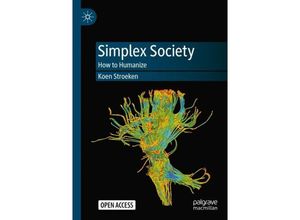This open access book provides thought-provoking anthropology grounded in comparative
ethnography. The theory captures the current historical moment the long-term trends that led
us here and the prospects for a humane future. The experience of complexity characterizing a
globalized information society triggers simplexes. These unidimensional responses instrumental
in bringing about a predictable effect are altering our ways of communicating and the
technologies we design. In Part I a 'speciated' history injected with the anthropology of
Bateson and Gluckman describes the semantic and experiential impoverishment of the lifeworld.
After going through the affects of distrust (the neolithic lifeway) of futility (industrial
lifeway) and disconnection (post-knowledge) the human species today depends for its survival
on installing a new lifeway which manages to wed (eco-social) inclusion to the already
difficult first pair of the French Revolution. The species needs to rehumanize. Part II
illustrates the remedies currently developed: to reframe re-sphere and re-source. What do
critical street art international football matches presidential elections hip-hop dissing
performances charismatic church services intuition stimulation and 'pre-ceptive' experiences
of consciousness have in common? They are moments of the real. Rooted in 'life sensing' they
are tensors organizing frameshift. As multiplex measures tackling the simplex these tensors
overcome the cultural relativism of the postmodern matrix.



